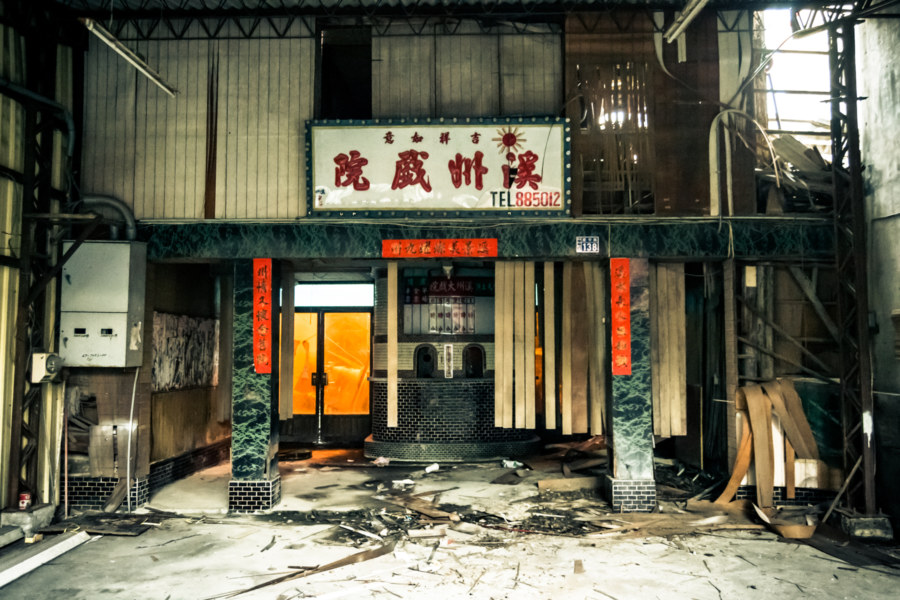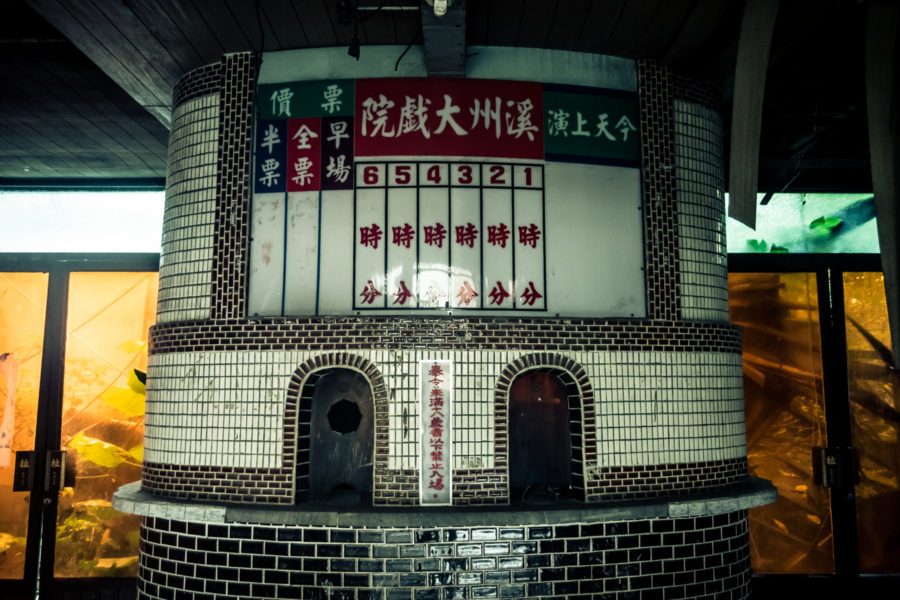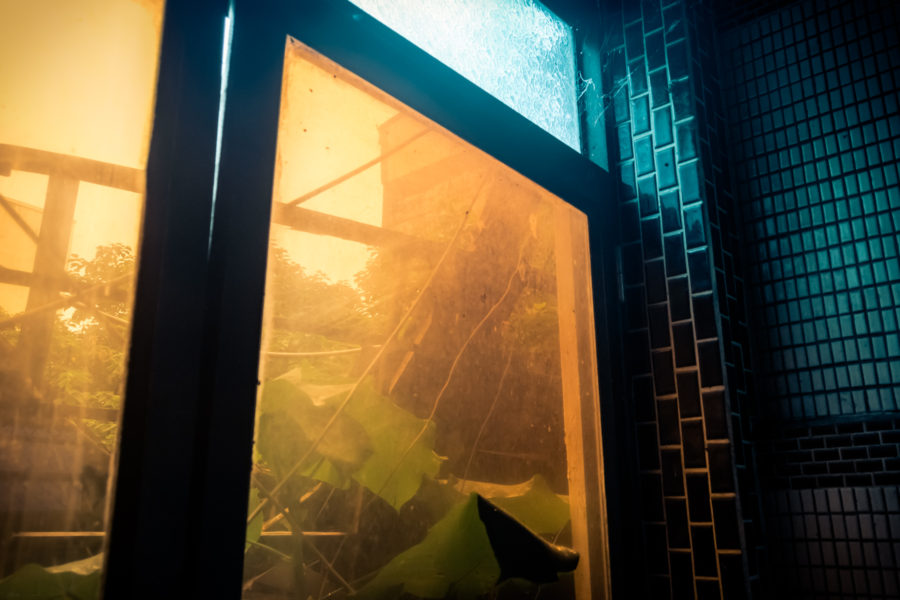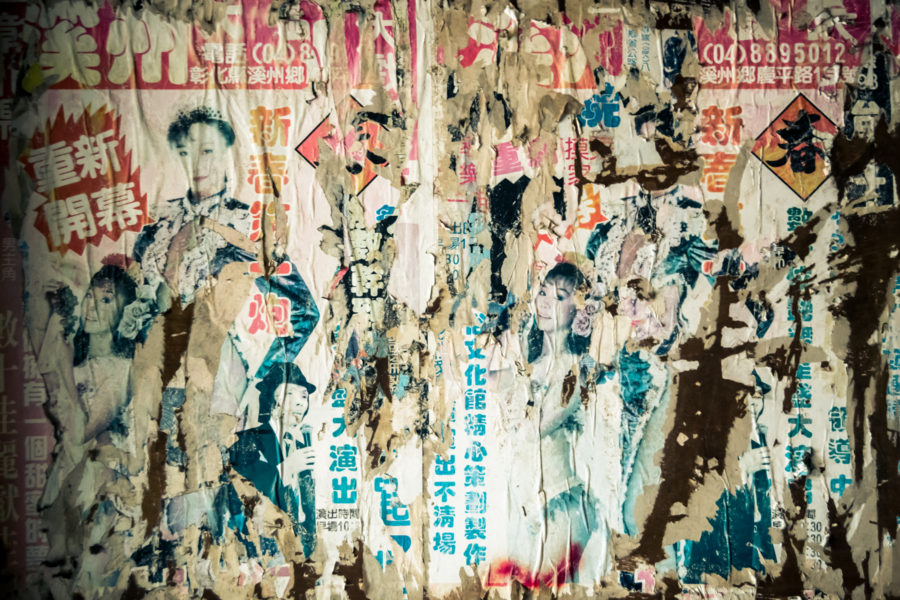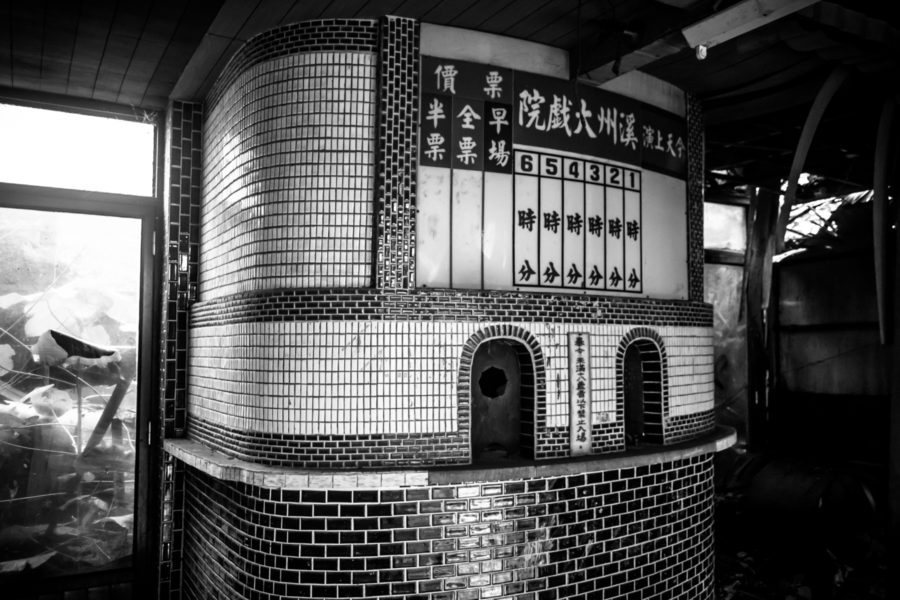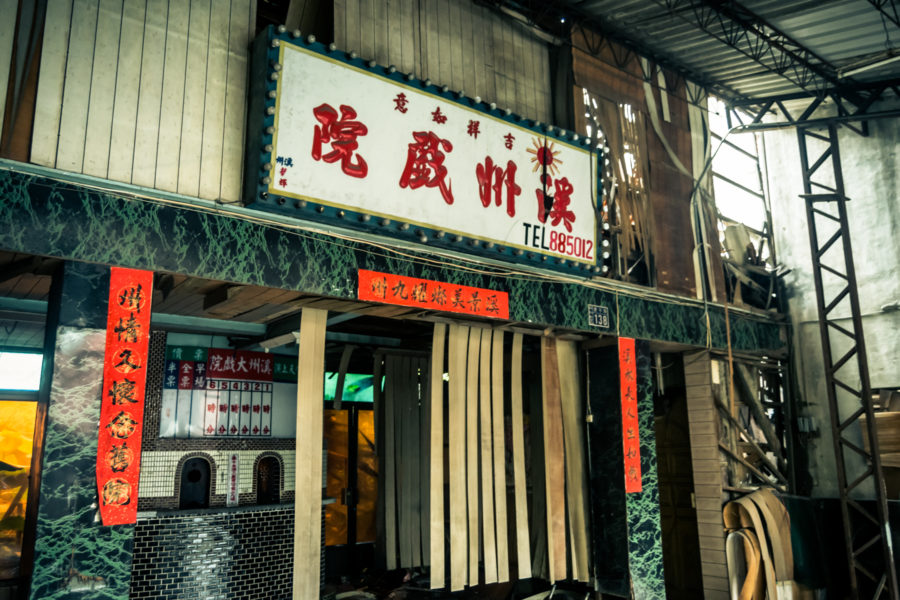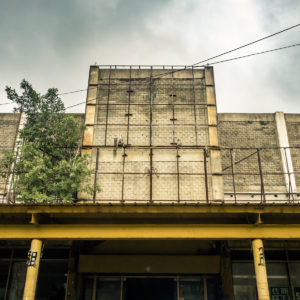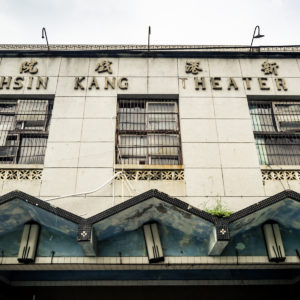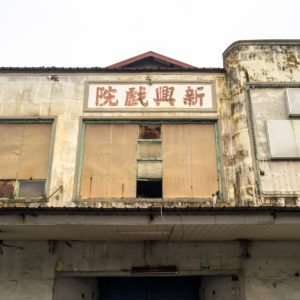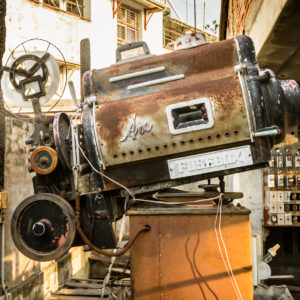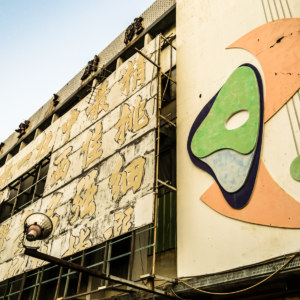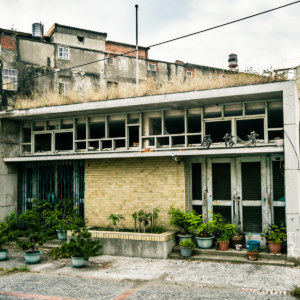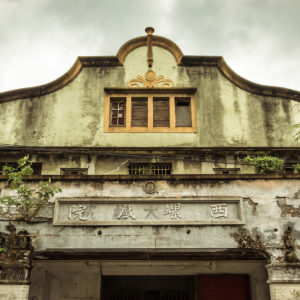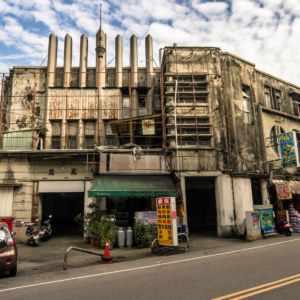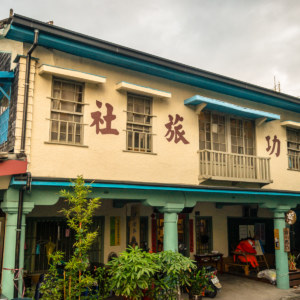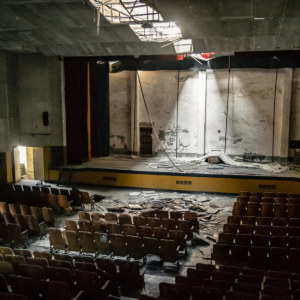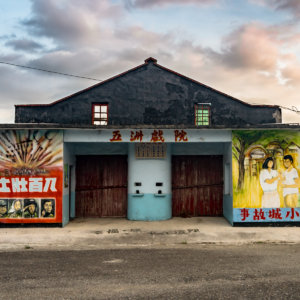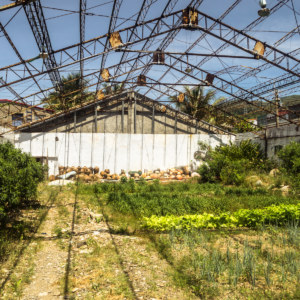Some people are into urban exploration for the optics—they love visiting the most visually-impressive places and taking cool photos—but I’m just as interested in documenting history and solving puzzles. Animated by curiosity, I have become proficient in navigating the Chinese language web in search of leads. Not all of these turn out to be something interesting but I enjoy those rare days where I set out into the countryside and see how many candidate sites I can knock off my list. This is what originally brought me to the gates of the humble Xizhou Theater 溪州戲院 in the small town of Xizhou, Changhua.
In November of 2016 I went for a scooter trip around southern Changhua, primarily to revisit Beidou, a vital center of trade and commerce in the late Qing dynasty era. After touring that old town I forged on to Xizhou, a little down the road to the southwest, to scope out a few leads, this theater among them. I hadn’t been able to figure out the exact location through Google Maps in advance but knew it was somewhere on the western side of town. That turned out to be enough of a clue for me to locate the ruins of Xizhou Theater not long after the search began.
Ordinarily I would go take a closer look but my presence aroused so much attention on the small street the theater is located that I declined to jump the fence out front and take a closer look. From the street it appeared as if little remains of the interior anyhow—broken timber from the original roofing is piled up against the door and sunlight is seeping through—but I hoped to return some day. As chance would have it I found another opportunity to visit Xizhou about six months later—and since I already knew the location I drove up and hopped over the gate before anyone noticed the presence of a foreigner in their midst. It is from this second visit that the majority of these photos were captured.
Unsurprisingly there is little written about this small town theater on the web. I only found two mentions of the place, both of them on Taiwanese tourism blogs: here and here. One of these links mentions that the theater was built for workers at Xizhou Sugar Factory 溪州糖廠. This sugar factory dates back to 1909 and was in continuous operation until sometime in the 1970s or so (which would give a proximate cause for abandonment). Initially I guessed the theater might have been built in the 1940s or 1950s during the peak of the sugar boom but according to academic sources I uncovered while rewriting this post it dates back to 1928. There’s a very good chance the original theater was heavily renovated during the post-war period.
In any case, the nearby sugar factory lay idle for decades before it was eventually converted into a public park. The rise and fall of the sugar industry probably explains much of the history of Xizhou—as well as this obscure little theater. And that’s what’s fun about this whole “urban exploration” hobby: everything is connected in some fashion and it’s endlessly interesting to attempt to connect the dots.
